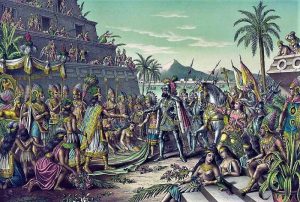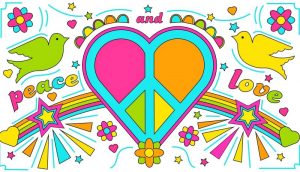Cultural diversity
When we speak of cultural diversity we mean the great variety, difference and abundance of different things within a given context. Cultural is a term that refers to everything that concerns a particular culture. Therefore, when we refer to the term cultural diversity we are talking about the way of living and interacting that exists effectively and satisfactorily between the different cultures that live within the same geographical space, including their heritages and different traditions. The difference of cultures in a given place helps to foster and expand knowledge and values such as respect and tolerance, because respecting and tolerating one's fellow human beings regardless of religion, belief, skin color or sex makes us better citizens.

Related topics
Cultural appropriation, interculturality, social inequality, social stratification, segregation, transculturation
What is cultural diversity?
Cultural diversity is the variety, difference and abundance of cultures that can be found within the same region or geographical space, in which they coexist peacefully regardless of their heritage, culture or tradition.
Characteristics of cultural diversity
- In cultural diversity there is a great multiplicity of cultures, each of them as a product of individual development.
- Cultures have fundamental distinguishing features that point to their characteristics, such as ethnicity, skin color, sex, language, religion, art and folklore, and even gastronomy.
- Within cultural diversity, we can find specific areas of diversity.
- There is a great cultural difference.
- It tries to preserve
- It has against it many ideological, religious and political positions against it.
- It possesses interculturalism.
History of cultural diversity
For the year 2003, several members of UNESCO called for normative action in defense of human creativity. The General Conference of UNESCO entrusted the Director-General with the task of submitting a report and a preliminary draft on the protection of cultural contents and artistic expressions. In December 2003, the Director convened a series of different meetings and then presented to the General Conference a report, with debates and recommendations taken from the meetings together with the preliminary draft, so that, on 20 October 2005, a convention supporting cultural diversity was adopted.
Types of cultural diversity
There are many types of cultural diversity, some of them are:
- Biological diversity, a term that refers to everything that surrounds nature.
- Functional diversity, a sociological term that refers to physical limitations.
- Sexual diversity, related to human sexuality.
- Cultural Diversity, which refers to the cultural richness of a human group.
- Religious diversity, which includes all types of religion in the world.
- Ethnic diversity, which is formed by a group of people who share the same historical identity, language and religion.
Elements
- Concrete or material elements: this includes such things as the type of clothing, the art of a place, architectural constructions, buildings, work tools and historical monuments.
- Symbolic or spiritual elements: includes a broad range of beliefs, religion, human values, ethics, acts of humanity, both legal and conventional norms and sanctions, the type of social and political organization, language, and science.
- Cultural elements or cultural traits: a smaller part of a society that is responsible for profiling it. They include all the characteristic features that make up a culture.
Advantages
- Cultural diversity opens the mind to new ideas.
- There is more creativity.
- Greater problem-solving
- There is a strengthening of cultures.
- It increases innovation and talent in one place.
- Different cultures bring great knowledge and more points of view.
Disadvantages
- Ethnocentrism may be presented, a term that refers to people considering their culture to be the best and for this reason, a series of fights and disputes begins.
- There is an increase in the ambiguity and complexity of cultures.
- Communication problems, mainly linguistic.
- It is difficult to make decisions together.
- Disagreement about rules, practices and procedures.
- Problems of discrimination may arise.
- There are different levels of learning.
Importance
Cultural diversity is important because it helps in country development, since the great amount of ethnic, social, traditional and regional resources increases the attraction of entrepreneurs, tourists and nations that see in them strong economic and commercial possibilities. It also increases ethnic diversity by adding a great deal of history and traditions belonging to other peoples.
Flag
Although there is no official flag, the Wiphala, also known as the flag of the indigenous peoples, is commonly used as it symbolizes equality and unity. In countries like Bolivia it is recognized as a national symbol. It is a flag that was used in the ancient Andean peoples, its shape is square and consists of 49 colored squares, including red, orange, yellow, white, green, blue and violet.
Cultural Diversity Day
October 12 was used to represent Columbus Day. The debate on the date began in 2007, when a project was presented in which the term “race” was called into question, a term that was discarded for cultural and political reasons. In 2010, a request was made to change and modify the name of the race day to Cultural Diversity Day, which was approved.
Cultural diversity in Mexico
In Mexico, it reflects a great multiplicity and interaction of cultures that make up the heritage of humanity. They seek to promote the preservation and promotion of cultures that already exist in the country and openness to new cultures. It is a country with a large number of ethnicities and religions, tradition and history in which crossbreeding plays an important role.
In Colombia
The diversity of this country is largely due to its location at the entrance to South America. It has the great privilege of being one of the countries that receives the greatest number of ethnic groups, which produces an immaterial enrichment of the country. It has a great presence of indigenous ethnic groups called Amerindians that form a specific group, people of African descent that were founded through the processes of crossbreeding, the ancient slaves, and the gypsies, originally from the north of India that were established at the time of the conquest.
In Argentina
Argentina has had a large number of immigrants from Peru, Bolivia and some countries that meet its limits. The main point for cultural diversity is in Cordoba, as it offers great possibilities for education and work, bringing with it new customs, history, traits, traditions and identities.
How to cite this article?
Briceño V., Gabriela. (2019). Cultural diversity. Recovered on 23 February, 2024, de Euston96: https://www.euston96.com/en/cultural-diversity/









